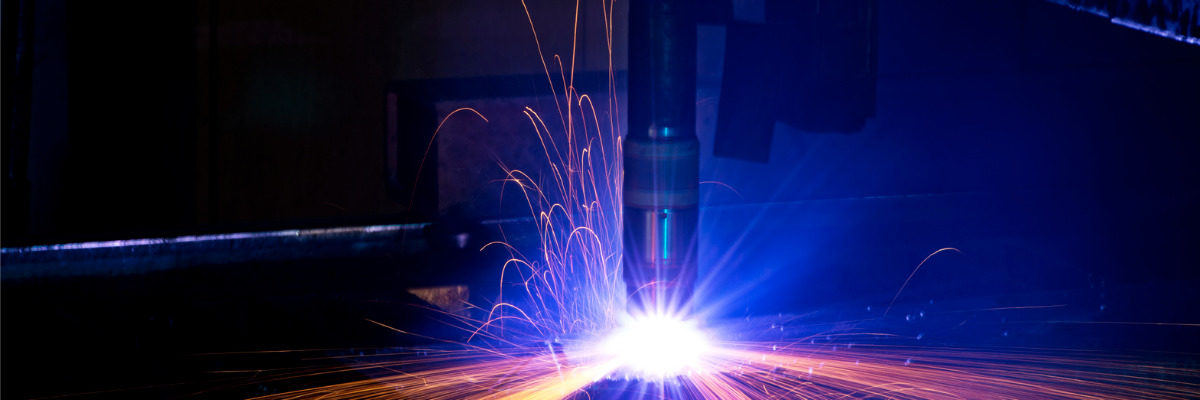Laser cutters
Laser cutters are becoming a normal feature of design and technology areas and many schools will have this equipment. When used properly, laser cutters are very safe and carry little risk. However, used improperly, they can cause serious and/or life-changing injuries or start serious fires.
Laser cutters normally contain a powerful CO2 laser. These lasers are capable of causing severe burns to skin and are capable of causing blindness even from a reflected beam. The light from a CO2 laser is invisible and causes the cornea of eye to become opaque almost immediately.
In addition to the direct risks posed by the laser, the cutting involves high temperatures that nearly always result in the emission of fumes, some of which are extremely toxic. For example, cutting PVC generates toxic vinyl chloride and polyurethane foams may release hydrogen cyanide and nitrogen oxides. For this reason, these materials should not be cut using a laser in schools, even with local exhaust ventilation (LEV) in operation.
Due to the risk posed, specific regulations apply to their use - the Control of Artificial Optical Radiation at Work Regulations (AOR) 2010 (pdf). The HSE has also produced specific guidance for laser cutters (pdf).
Laser cutters used in schools should only be operated by trained staff and any learners operating the machinery must be supervised. There must be an up-to-date risk assessment in place that operators are familiar with.
Laser cutters used in schools should be enclosed to ensure the beam cannot be accidentally observed and there must be a secure interlock to ensure that the cutter cannot be operated unless the enclosure is in place.
LEV should also be in place to remove any gases and/or dust that is created by the cutting process. The LEV is also normally required to prevent fires starting due to the cutting activity, as some of the fumes produced are flammable.
The laser cutter should not be used without a properly serviced LEV system in operation. Ideally, there should be an interlock to prevent operation without the LEV operating - if the cutter is capable of operation without the LEV and a fire breaks out, this could be deemed a breach of health and safety legislation by the employer failing to take sufficient steps to control a hazard.
If any member has concerns about the safety of laser cutters used in their school, they should not use the cutter and report their concerns to school management and/or raise their concerns with the NASUWT Health and Safety Representative. Further advice is available from the NASUWT.
3D printers
3D printers are a fairly new technology that is now becoming more widespread in schools. As the technology has developed and use increased, there is evidence of health and safety risks associated with the process of 3D printing.
The concerns are primarily around the particulates and chemical fumes that are produced as a result of the printing process, but also around the high temperatures used by the printer.
When inhaled, the emissions could present a risk to health, particularly for those with pre-existing respiratory conditions such as asthma. Even a short exposure can cause breathing symptoms in some people, but there may also be risks associated with long-term use.
As such, the Control of Substances Hazardous to Health (COSHH) Regulations would apply. These Regulations require employers to ensure that exposure is prevented or, where this is not reasonably practicable, adequately controlled. A COSHH risk assessment would therefore be required. Guidance for preparing a COSHH risk assessment can be found on the HSE website.
Schools should only use 3D printing equipment which carries a CE mark. Although 3D printers can be purchased in kit form, this would not be recommended by the NASUWT.
3D printers should be operated inside an ‘exposure control cabinet’ fitted with a local exhaust ventilation (LEV), which is itself located in a well-ventilated room.
The LEV must have an adequate fan and filters to enable the removal of small particles and fumes.
Access to the cabinet should be controlled by staff. The cabinet will also prevent contact with hot and moving parts which themselves constitute a significant risk.
Some printers are sold with a full enclosure, which is the best solution, otherwise a cabinet will be needed. It should be remembered that the cabinet will take time to clear the emissions after printing has completed and manufacturers advice should be followed.
Further guidance is available from the CLEAPSS website (pdf).

